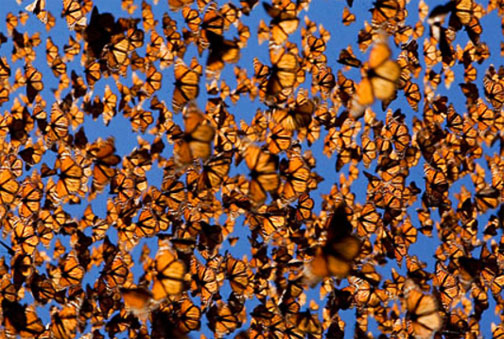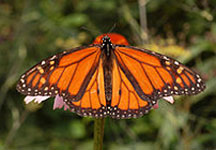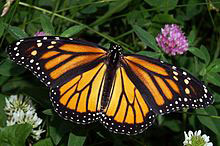— “Less than three acres of trees in Mexico were occupied by Monarch butterflies this winter - about 1/20th of what it has been in the past....The scale of the loss of habitat is so big that unless we compensate for it in some way, the Monarch population will decline to the point where it will disappear.”
- Chip Taylor, Ph.D., Prof. of Biology, Univ. of Kansas;
Founder and Director of Monarch Watch, Lawrence, Kansas



March 28, 2013 Lawrence, Kansas - In the 1970s, Monsanto began producing the herbicide glyphosate, a broad leaf and grass weed killer called Roundup. Farmers liked it because it would kill many different types of weeds. Then Monsanto came up with genetically engineered corn and soybean crops that had their DNA altered to resist glyphosate. Farmers could now spray glyphosate everywhere without killing their corn and soybean crops. By 2007, glyphosate was the most used herbicide in United States agriculture. But what came next were “Superweeds” resistant to glyphosate. Monsanto scientists told farmers to simply apply more glyphosate.
Click here to subscribe and get instant access to read this report.
Click here to check your existing subscription status.
Existing members, login below:
© 1998 - 2024 by Linda Moulton Howe.
All Rights Reserved.

